San Miguel is filled with striking examples of Neoclassical and Neo-Gothic architecture from colonial periods. Given more time, it would have been especially nice to take an “architectural walking tour” and learn more about styles and construction. But it does not really require specific facts and knowledge to enjoy the beauty of San Miguel de Allende. Just look around ……. with caution! It can be risky to simultaneously look up and out at everything without also looking down at your feet as you walk on the cobblestones or the narrow sidewalks. A beautiful sight could easily be ruined by a tumble.
Instead of fancy and famous buildings, here are photos of buildings and streets that didn’t fit in any specific blog post. They are simple, not neo-gothic or neoclassical. Dressed in the colors of yellows, ochres, oranges and reds, and adorned with greenery and flowers they are a delight to behold.
In the photos above, funny “things” can be seen sticking out high on the walls. They are the San Miguel version of downspouts for rain. During the rainy season all the water is deflected off of the roofs by these pipes that stick out about two feet. Imagine walking down the streets during a rain and dodging these pipes!
Speaking of water, there are fountains on many corners and tucked into little spaces along the streets.
Within a very short time of our arrival, Al and I both noticed that the doors in San Miguel were extraordinary. Whenever I could, I would stop and try to photograph interesting doors. What patience my husband and friends have! With no rhyme or reason, here are 22 doors that I photographed.
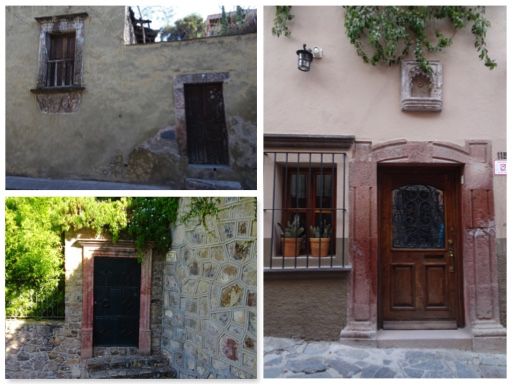
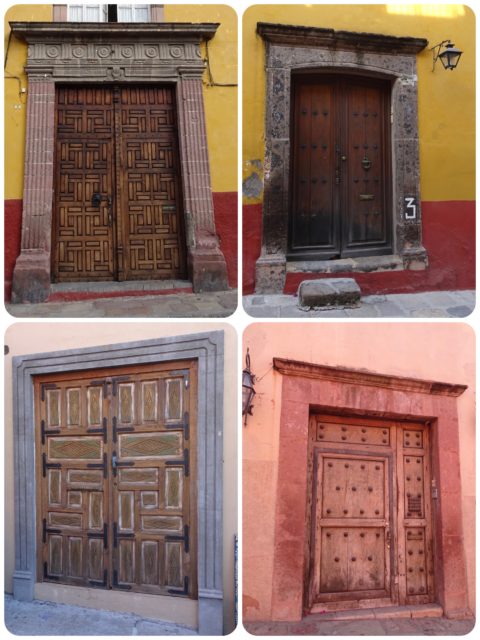
Where there are doors, there are door knobs and knockers.
There is absolutely no room for mailboxes on these narrow streets, so most doors have a letter slot. I noticed that the letter slots had different labels – correo, cartas, and buzon.
Since the title of this blog post is “The Streets of San Miguel” I am going to add two other uniquely Mexican traditions that we saw on our wanders through the streets.
Within Western culture, skulls usually depict the dark, macabre and gruesome death. During our visit to Mexico, I quickly noticed that festively decorated calaveras appeared everywhere. I had heard of the “Day of the Dead” (Día de los Muertos) celebration in Latin America cultures, but I knew little about it. Día de los Muertos is a Mexican holiday, celebrated on November 1st and 2nd in connection with the Catholic holidays of All Saint’s Day and All Hollow’s Day. The festivities start at midnight on the 31st October (All Hallow’s Eve, our Halloween).

Día de los Muertos is an important family tradition and time to remember loved ones who have passed away. Children learn to respect that life is brief; there is a circle to life and not to fear death. Danielle Conte, owner of Pachamama Native Art, Inc. and blog writer described the meaning of skulls in Mexican culture (Las Calaveras – As Interpreted by a Gringa Living in Mexico) in a beautiful way- “Calaveras remind us to celebrate our lives and mortality, to look at the past and future, all the while being present. They are a way for us to appreciate and to acknowledge that life is sacred, but death, “La Muerte”, is another rite of passage in our lives, no less sacred than life itself. Death, too, is alive. The inevitable is not to be feared or avoided; it is to be embraced and danced. More than anything else, calaveras remind us to live each moment to its fullest, to face one’s mortality with a smile and with courage, and to trust in the immortality of an afterlife.”
There were funny looking little dioramas hanging on the walls of several restaurants we visited. A closer look showed little people as skeletons made of painted clay, combining religion, mestizo spirituality and popular culture. Lots of popular culture. It took me a while to research a proper name for these – nichos or cajitas de muertos (Day of the Dead dioramas).

TOP – “me tienes hecho pedazos” = you got me torn apart!
BOTTOM – The Beetles/Beatles !!!!????
While sitting on a wrought iron bench under the shade in La Jardin, absorbing the atmosphere around us, we heard a band. Looking up, we saw a “parade” coming down the street, led by a young girl and an older man. A Quinceañera !
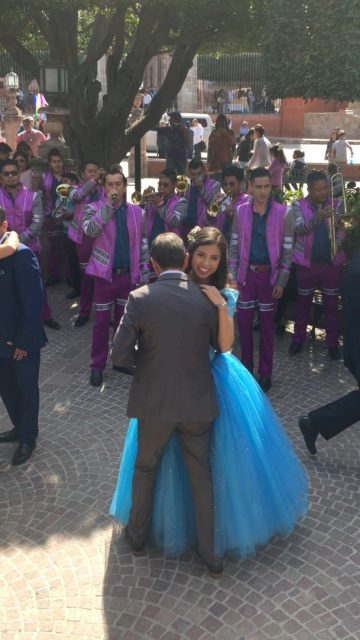
Quinceañera (feminine form of “fifteen-year-old”) is an important celebration of a girl’s fifteenth birthday in Mexico and other Latin American cultures, marking the transition from childhood to young womanhood. Beginning with a mass and a blessing from the priest, a young woman is presented to the community with music, dancing, and feasting. It seems to be a combination of a “sweet sixteen” birthday party and “coming out ball” for debutantes.
Beautiful streets, happy streets.
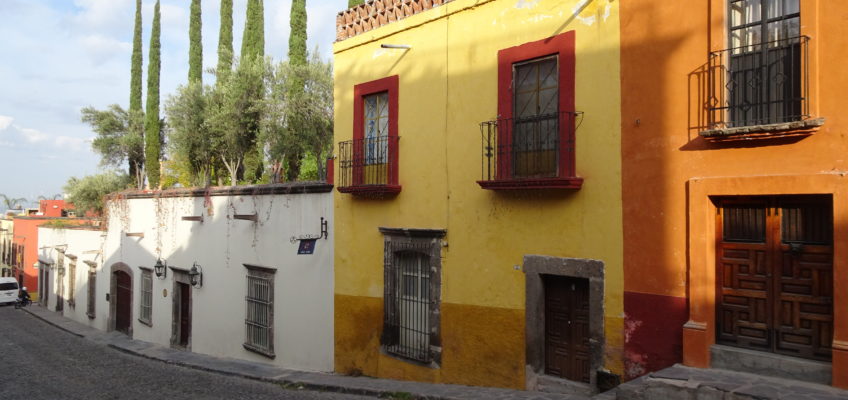


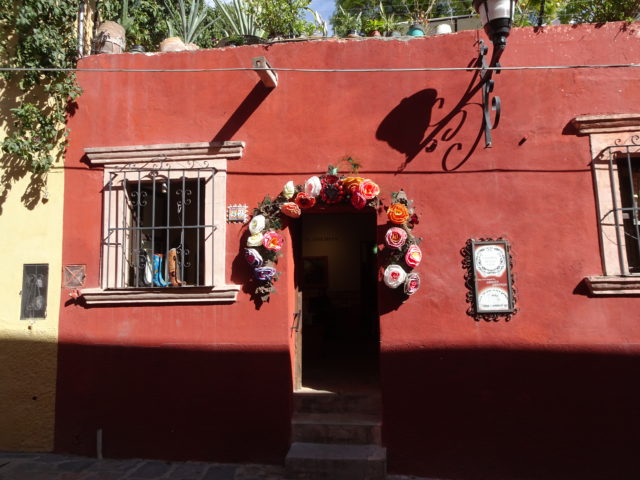

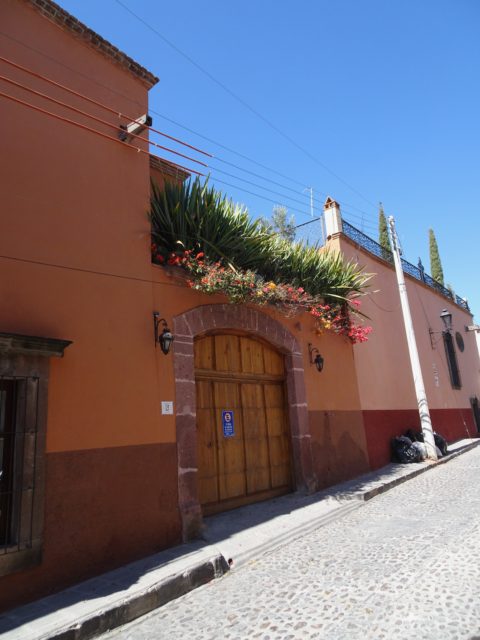

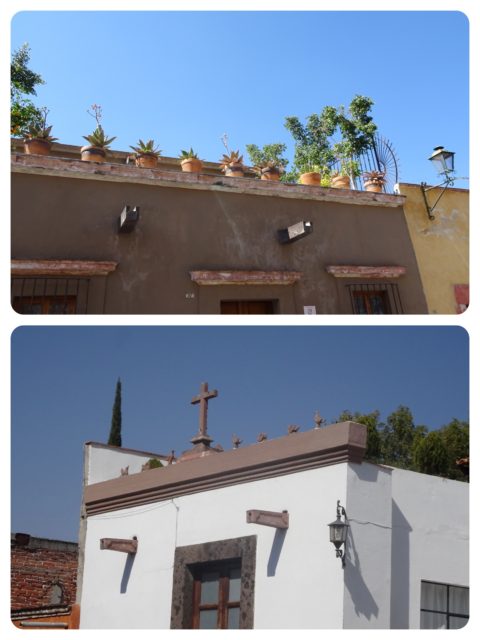

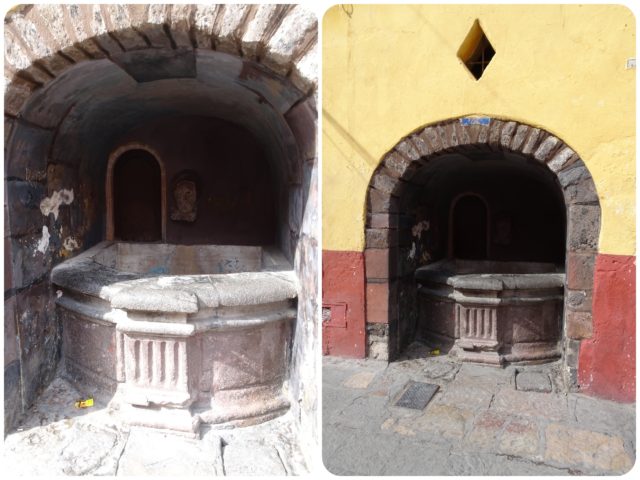

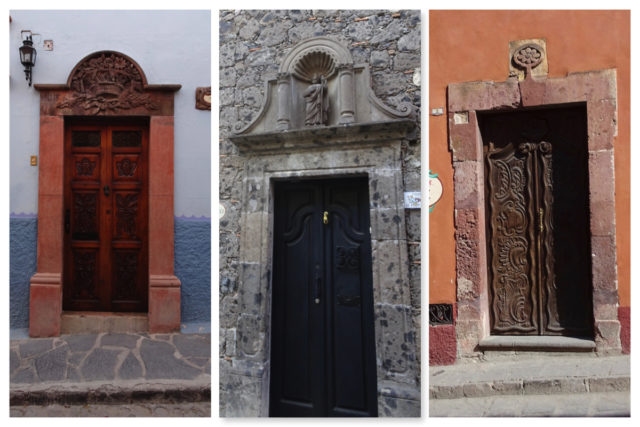


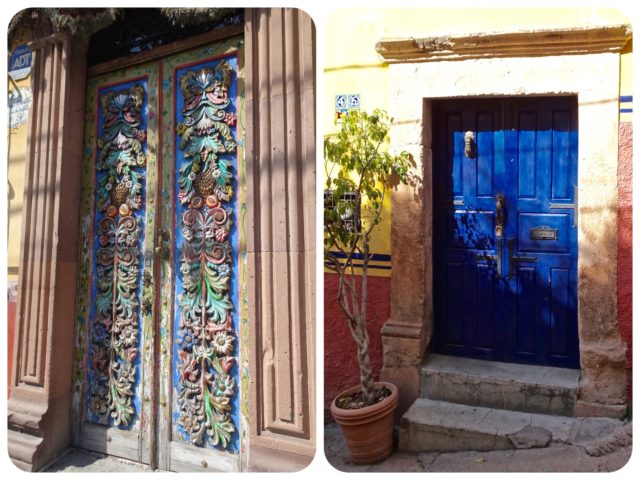
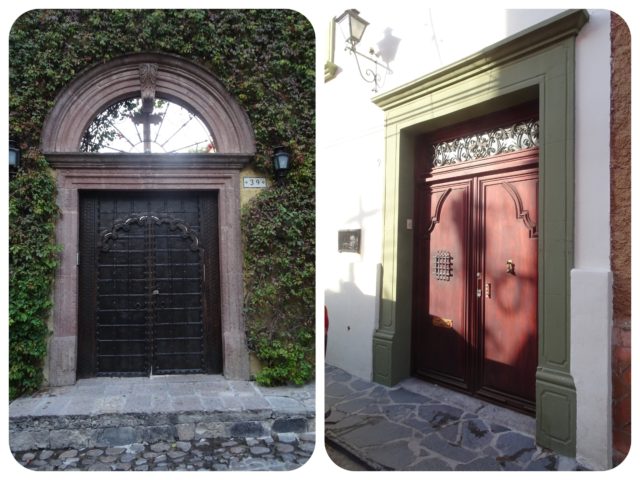
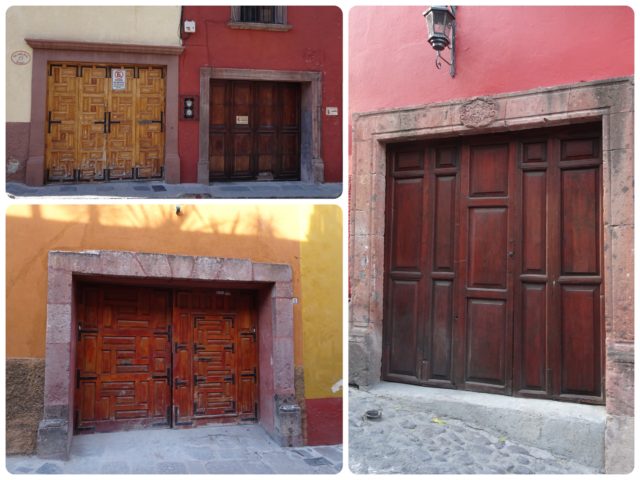
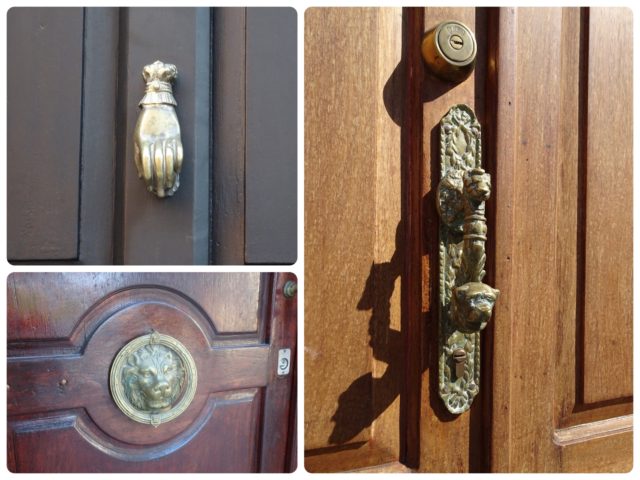
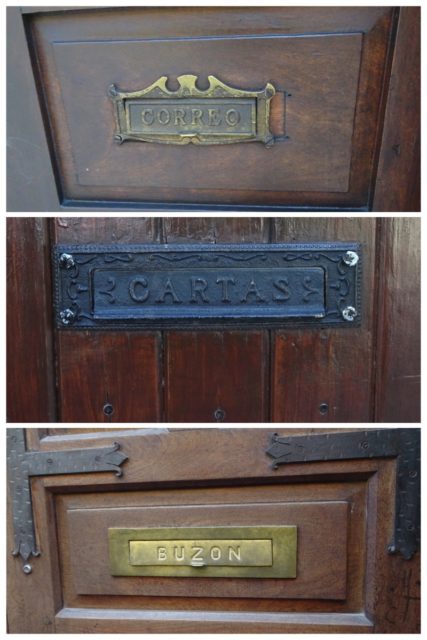

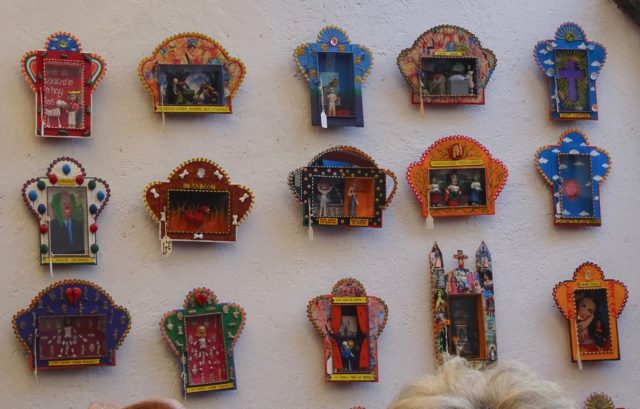
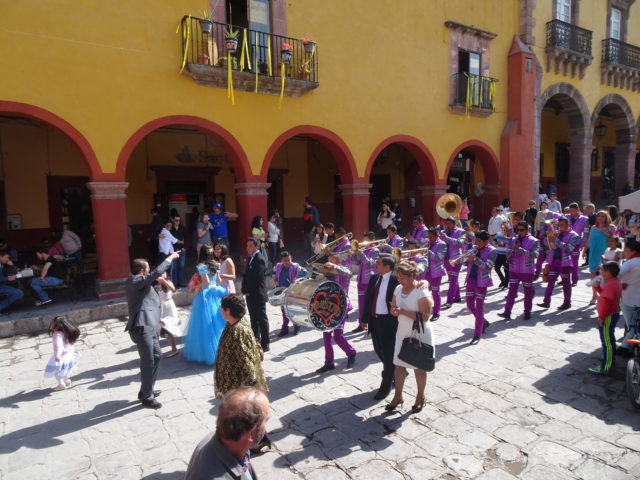
Leave a Reply